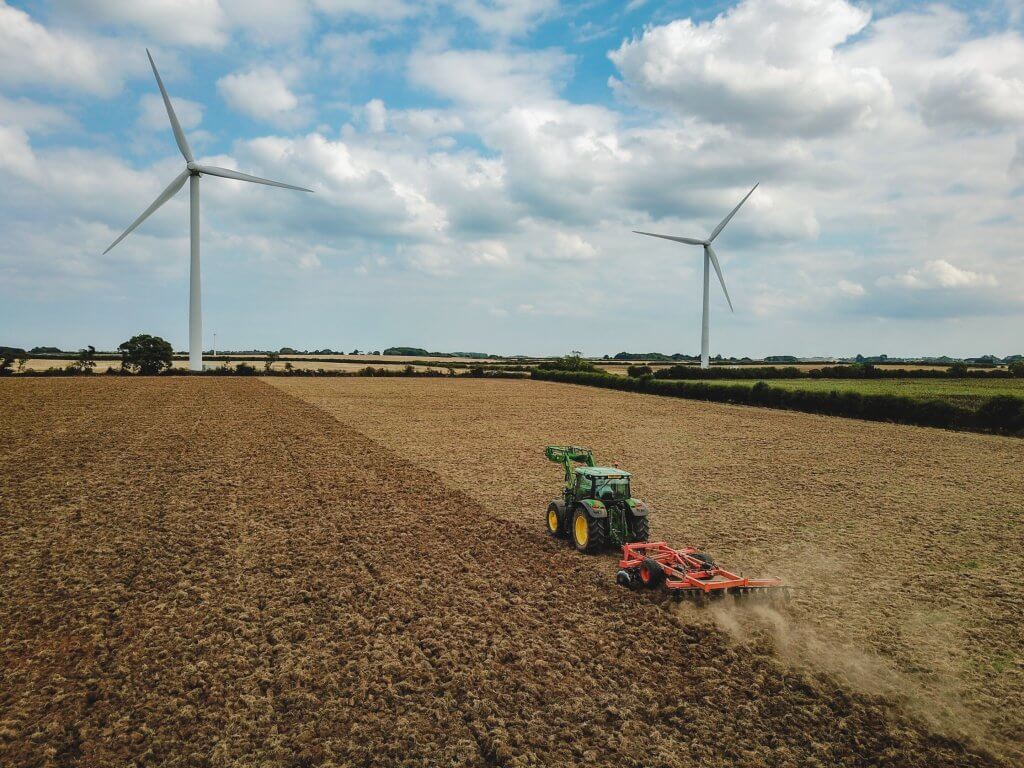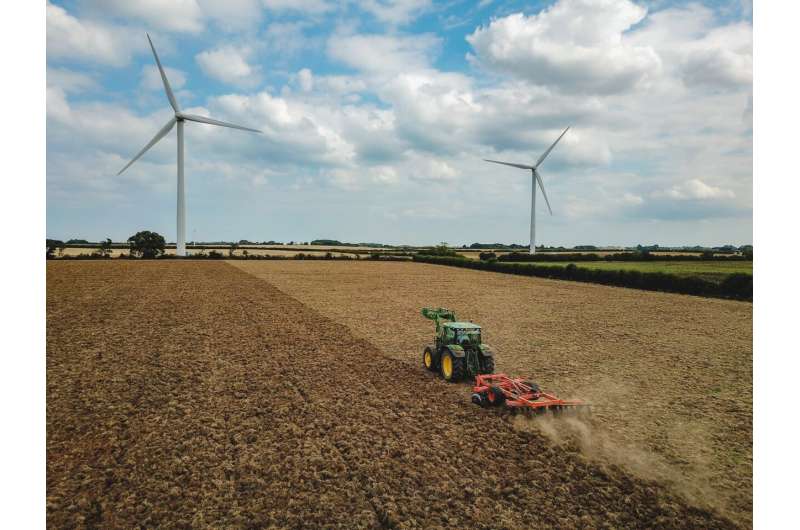
Precision agriculture and profitability from the perspective of farmers (Image Credit: Phys.org)

Since the late 1980s, precision agriculture has become increasingly prevalent on farms across the United States, particularly in America’s heartland, where adoption of these practices and technologies is more widespread. Past research has proven these practices and technologies help increase farming efficiency and crop production, enhancing economic viability and reducing environmental problems.
Despite the advantages, some farmers are still hesitant to adopt these technologies. Tong Wang, associate professor in South Dakota State University’s Ness School of Management and Economics, has been conducting research on precision ag technologies and their adoption rates over the past few years to understand why a farmer adopts—or doesn’t adopt—these practices.
In a new study published in Ecological Economics, Wang and her research team investigated farmers’ viewpoints on the most influential factor behind adopting new technologies and practices: profitability.
“To enhance precision ag adoption rates and ensure long-term farm sustainability, it is important for producers to gain a better understanding of precision ag-induced profit changes,” Wang said. “In this study, we compared precision ag adopters’ rated profit changes for a range of technologies, and we studied a variety of factors that potentially affect profit changes to understand the source of variance in precision ag profitability.”
Precision ag technologies and viewpoints on profitability
“Precision agriculture” is an overarching term for a variety of farming management strategies and technologies that aim to address the spatial and temporal variability of the field and promote farming efficiency. In this study, researchers highlighted eight widely adopted precision ag technologies, including auto-steering and guidance, automatic section control, satellite/aerial imagery, unmanned aerial vehicle/drone imagery, variable rate fertilizer application, variable rate seed and application, variable rate pesticide application and variable rate irrigation application.
Each of the technologies provides potential opportunities for profit increases if adopted.
“Different precision ag technologies adopted by farmers over time may complement each other, and the cumulative benefit could be well beyond the cost savings and efficiency gains of an individual technology,” Wang said. “The value of precision ag could potentially stem from reduced downtime, better capacity utilization and reduced risk of yield loss from weather events.”
To understand farmers’ viewpoints regarding profitability and adoption, the research team—including Wang and Hailong Jin, associate professors in the Ness School of Management and Economics, as well as faculty members from South Dakota School of Mines and Technology, University of Minnesota, Texas A&M University and University of Nebraska-Lincoln—sent out surveys to 6,000 regional farmers in 2021.
The surveys asked farmers in eastern South Dakota, eastern North Dakota, western Minnesota and eastern Nebraska to rate their profit change after adopting, or not adopting, each of the listed precision ag technologies.
The most widely adopted precision ag technologies include auto-steering and guidance, which fit under the “georeferencing technology” category. This technology helps farmers navigate their fields and use resources more efficiently, a system that helps boost profitability.
Satellite imagery was the next most widely adopted technology, with nearly 60% of all farmers having used it. Drones and unmanned aerial vehicles fall under a similar category to satellite imagery; however, drones are much less prevalent, with an adoption rate at 26%. While 26% is low in comparison to other adoption rates, it is a substantial increase from previous research, indicating that drone usage is on the rise among farmers.
“The use of UAVs or drone-based remote sensing has exponentially increased in the last decade,” Wang said. “Compared to satellite imagery, UAV remote sensing offers higher temporal and spatial resolution and is less affected by weather conditions. Other benefits of UAV remote sensing include fast set-up time and low acquisition and maintenance costs.”
To understand viewpoints on profitability, the research team had to know what the rated change of profits is according to adopters of precision ag technologies, and the perceived profit change by non-adopters. For each of the listed precision ag technologies, approximately 60% of non-adopters indicated they had “no idea” if adoption resulted in profitability change for the farm.
“This is not surprising since non-adopters have no direct hands-on knowledge on precision ag profitability. Most of them likely have not received such information,” Wang said. “This highlights the need for a better understanding of precision ag-generated profit change from adopters’ experience over regions with different farm, soil and weather characteristics.”
Adopters of most of the precision ag technologies were aware of the profitability changes. Some farmers who had adopted drones or satellite imagery had “no idea” of the profitability change. Others were not aware of any profitability changes after adopting the variable rate applications.
“Diagnostic technologies (drones and satellite imagery) increase farm profit through increased (variable rate) efficiency. It is therefore hard for farmers to separate their effects on profit,” Wang noted.
One of the biggest takeaways from the research was that adopters with significant experience (more than three years) with specific precision ag technologies were far more likely to understand the effect of precision ag adoption on profit change than those with just a few years (or even months) of experience.
“As adopters accumulate more experience and data support over the years, they gain more understanding about the effect of precision ag adoption on their profit,” Wang said. “Our regression results demonstrate that the profits from precision ag usage increase over time and that use of conservation practices likely influences precision ag profitability in a positive way.
Takeaways
Precision ag has been crucial in optimizing returns and yields while using resources as efficiently as possible, hence why its implementation has been credited with helping spurn on the “Green Revolution.” Despite these benefits, adoption rates are not as widespread as one would assume.
In South Dakota, 53% of farmers are using precision ag practices to manage their crops or livestock, according to a 2021 study from the U.S. Department of Agriculture. While this is one of the highest rates in the U.S., many other states have a fraction of their farmers adopting precision ag technology.
While profit is often the most important consideration when adopting new technologies, this study demonstrated that non-adopters had “no idea” how their profit would change following adoption.
“This highlights the necessity of investigating adopter-rated profit changes toward different precision ag technologies,” Wang said.
To further facilitate precision ag adoption, the research team noted that financial support during the first few years of adopting a new technology could be beneficial. The researchers also theorized that connecting long-term adopters with non-adopters so they could share experiences with the technology could also help increase adoption rates.
“Rising input costs in recent years further highlight the importance of using precision ag technology since its site-specific management would help improve input use efficiency and, in many cases, reduce input cost,” Wang said.
More information:
Tong Wang et al, Understanding farmer views of precision agriculture profitability in the U.S. Midwest, Ecological Economics (2023). DOI: 10.1016/j.ecolecon.2023.107950
Provided by
South Dakota State University
Precision agriculture and profitability from the perspective of farmers (2023, October 11)
retrieved 12 October 2023
from https://phys.org/news/2023-10-precision-agriculture-profitability-perspective-farmers.html
part may be reproduced without the written permission. The content is provided for information purposes only.





